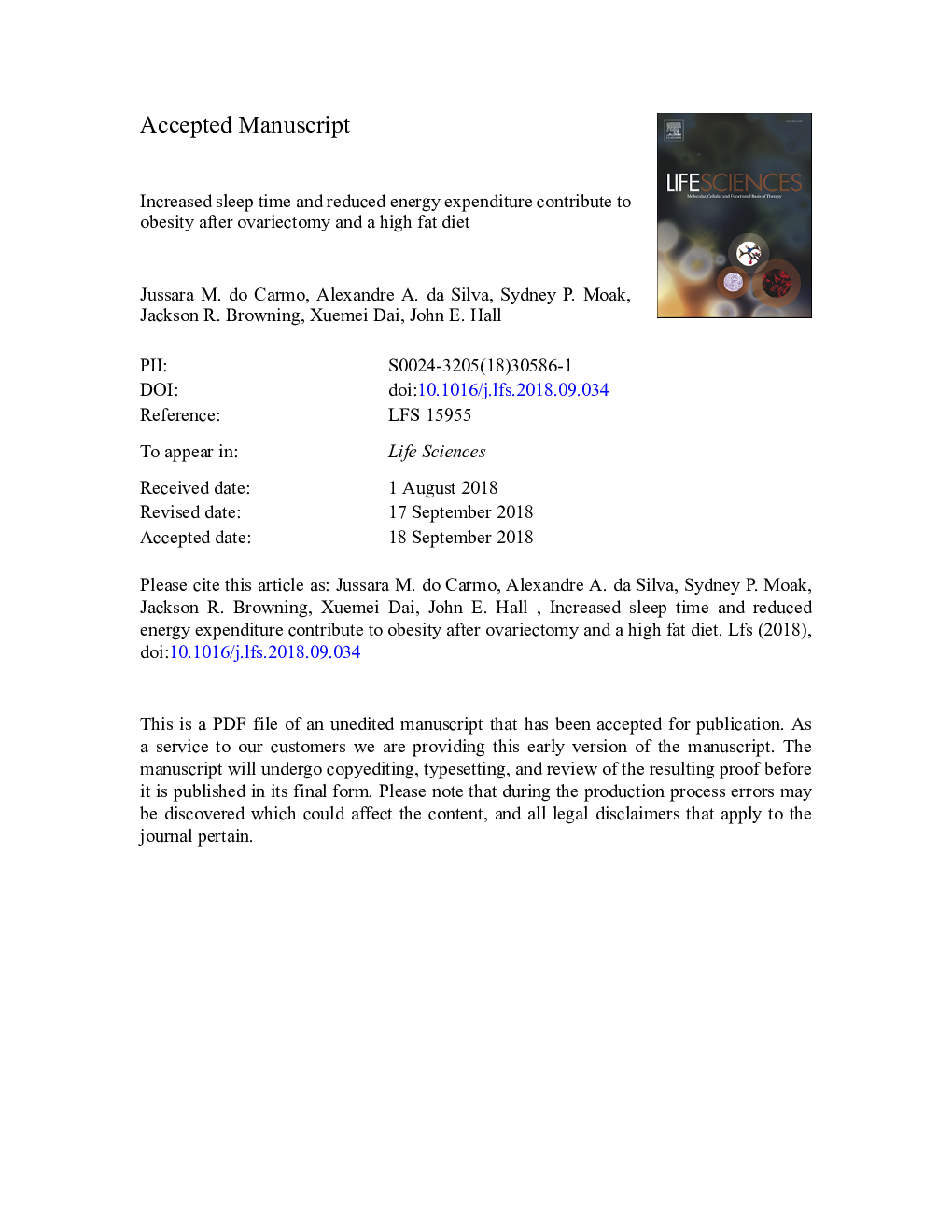| Article ID | Journal | Published Year | Pages | File Type |
|---|---|---|---|---|
| 11023084 | Life Sciences | 2018 | 34 Pages |
Abstract
In this study we examined if sleep time, caloric intake and energy expenditure are important contributors to development of ovariectomy-induced obesity in mice fed control or high fat diet (HFD). Twelve female mice at 6â¯weeks of age were divided into 2 groups: Sham (nâ¯=â¯5) and ovariectomized (OVX, nâ¯=â¯7). Mice were fed control diet for 9â¯weeks and shifted to HFD for additional 9â¯weeks. Food intake and body weight were measured daily and body composition was measured weekly by EchoMRI. Energy expenditure (EE), oxygen consumption (VO2), motor activity (MA) and sleep time were monitored at week 9 during control diet and HFD. OVX did not alter caloric intake, body weight or body composition, MA, sleep time or fasting blood glucose, but slightly reduced EE compared to Sham mice on control diet. After HFD feeding, OXV mice had similar caloric intake, lean mass, MA, and blood glucose levels but had significantly greater weight gain (8.2â¯Â±â¯1.0 vs. 4.8â¯Â±â¯1.2â¯g, pâ¯<â¯0.05), increased fat mass and sleep time, and reduced EE (3.3â¯Â±â¯0.4 vs. 5.5â¯Â±â¯0.2â¯kcal/h) and VO2 (1.12â¯Â±â¯0.01 vs. 1.83â¯Â±â¯0.05â¯ml/min) compared to Sham group. Daytime blood pressure was higher while nighttime heart rate was lower in OVX group. These results suggest that OVX may not substantially alter body weight or body composition in mice fed a normal diet, but when combined with HFD it increases sleep time and reduces EE, leading to greater weight gain and adiposity without altering food intake.
Related Topics
Health Sciences
Medicine and Dentistry
Cardiology and Cardiovascular Medicine
Authors
Jussara M. do Carmo, Alexandre A. da Silva, Sydney P. Moak, Jackson R. Browning, Xuemei Dai, John E. Hall,
